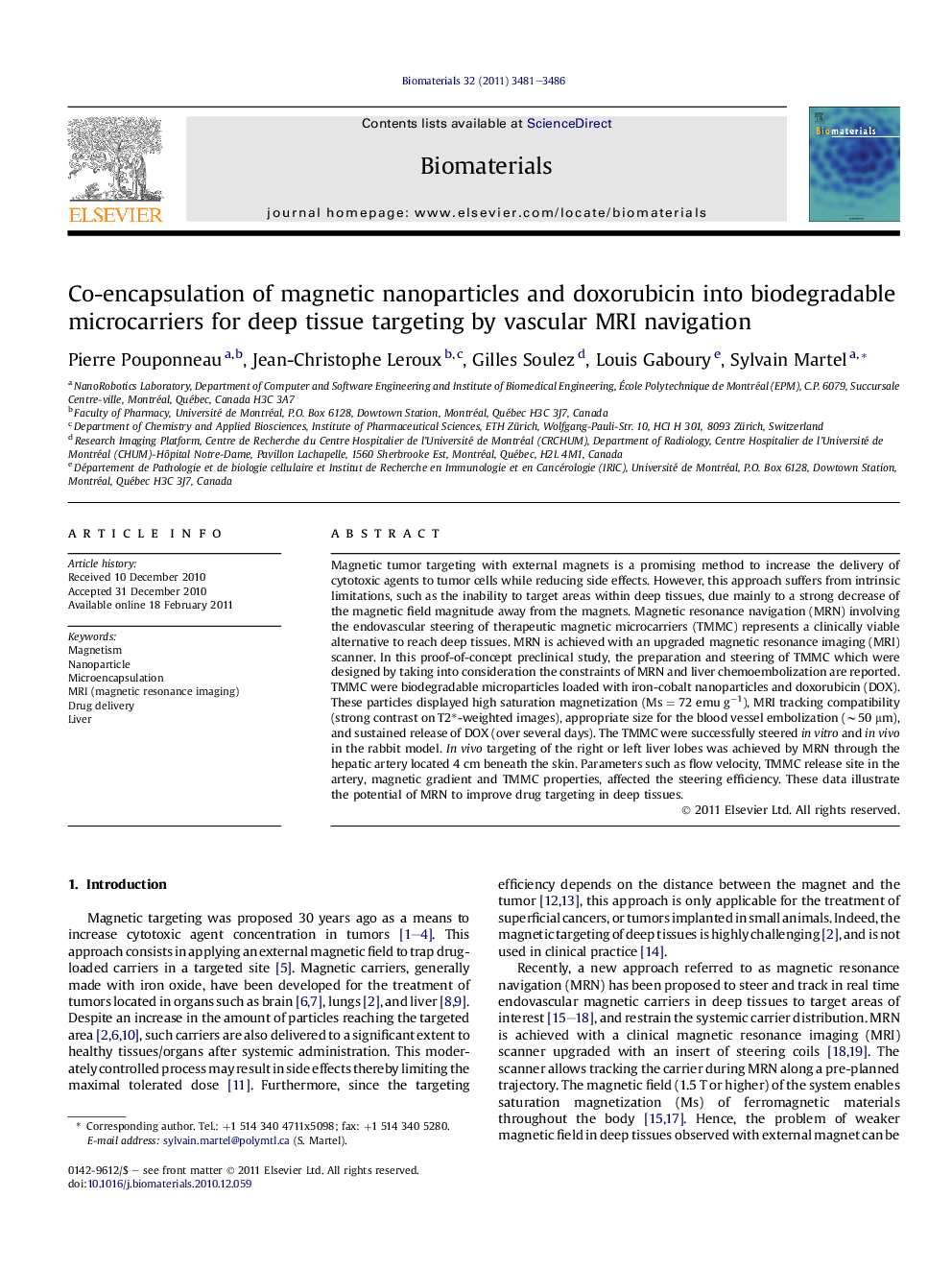| Article ID | Journal | Published Year | Pages | File Type |
|---|---|---|---|---|
| 7715 | Biomaterials | 2011 | 6 Pages |
Magnetic tumor targeting with external magnets is a promising method to increase the delivery of cytotoxic agents to tumor cells while reducing side effects. However, this approach suffers from intrinsic limitations, such as the inability to target areas within deep tissues, due mainly to a strong decrease of the magnetic field magnitude away from the magnets. Magnetic resonance navigation (MRN) involving the endovascular steering of therapeutic magnetic microcarriers (TMMC) represents a clinically viable alternative to reach deep tissues. MRN is achieved with an upgraded magnetic resonance imaging (MRI) scanner. In this proof-of-concept preclinical study, the preparation and steering of TMMC which were designed by taking into consideration the constraints of MRN and liver chemoembolization are reported. TMMC were biodegradable microparticles loaded with iron-cobalt nanoparticles and doxorubicin (DOX). These particles displayed high saturation magnetization (Ms = 72 emu g−1), MRI tracking compatibility (strong contrast on T2∗-weighted images), appropriate size for the blood vessel embolization (∼50 μm), and sustained release of DOX (over several days). The TMMC were successfully steered in vitro and in vivo in the rabbit model. In vivo targeting of the right or left liver lobes was achieved by MRN through the hepatic artery located 4 cm beneath the skin. Parameters such as flow velocity, TMMC release site in the artery, magnetic gradient and TMMC properties, affected the steering efficiency. These data illustrate the potential of MRN to improve drug targeting in deep tissues.
